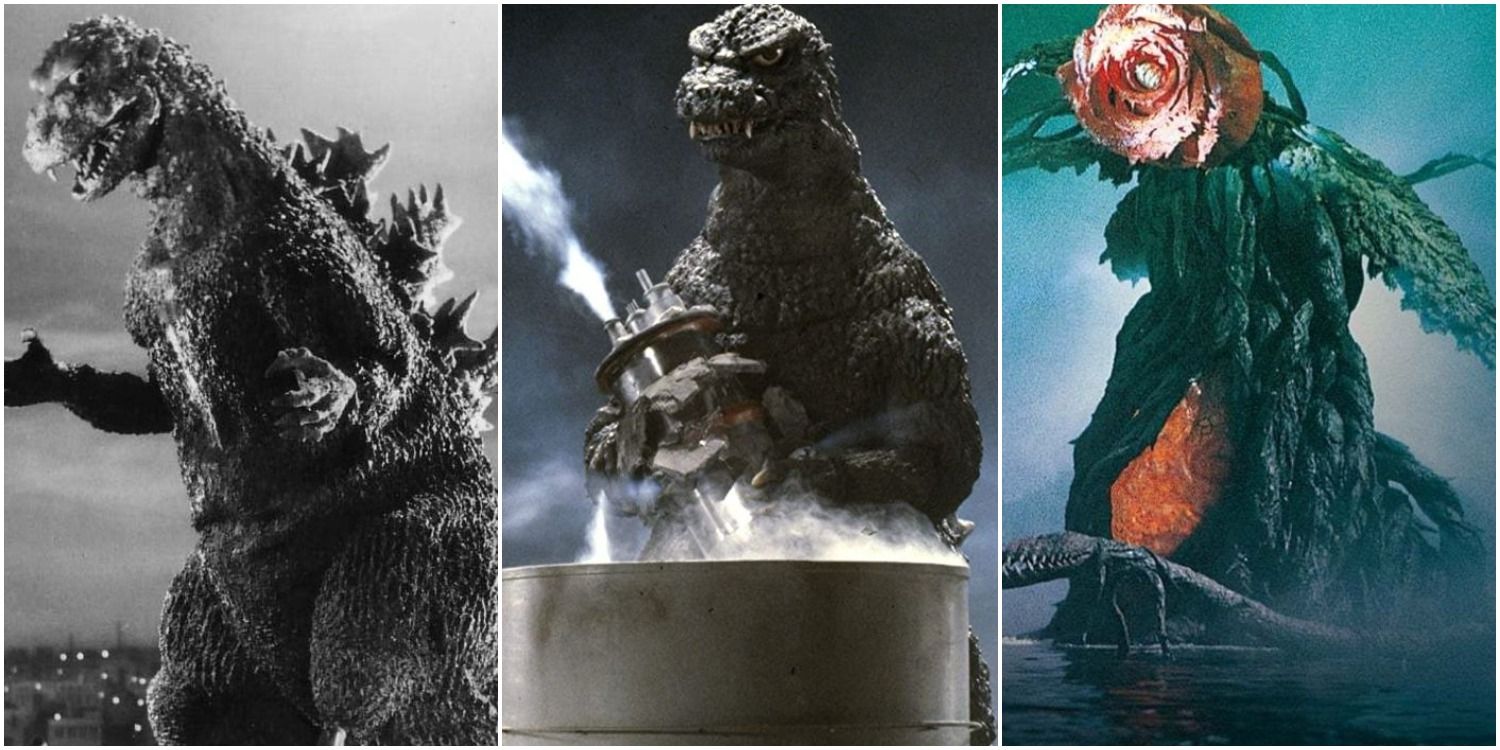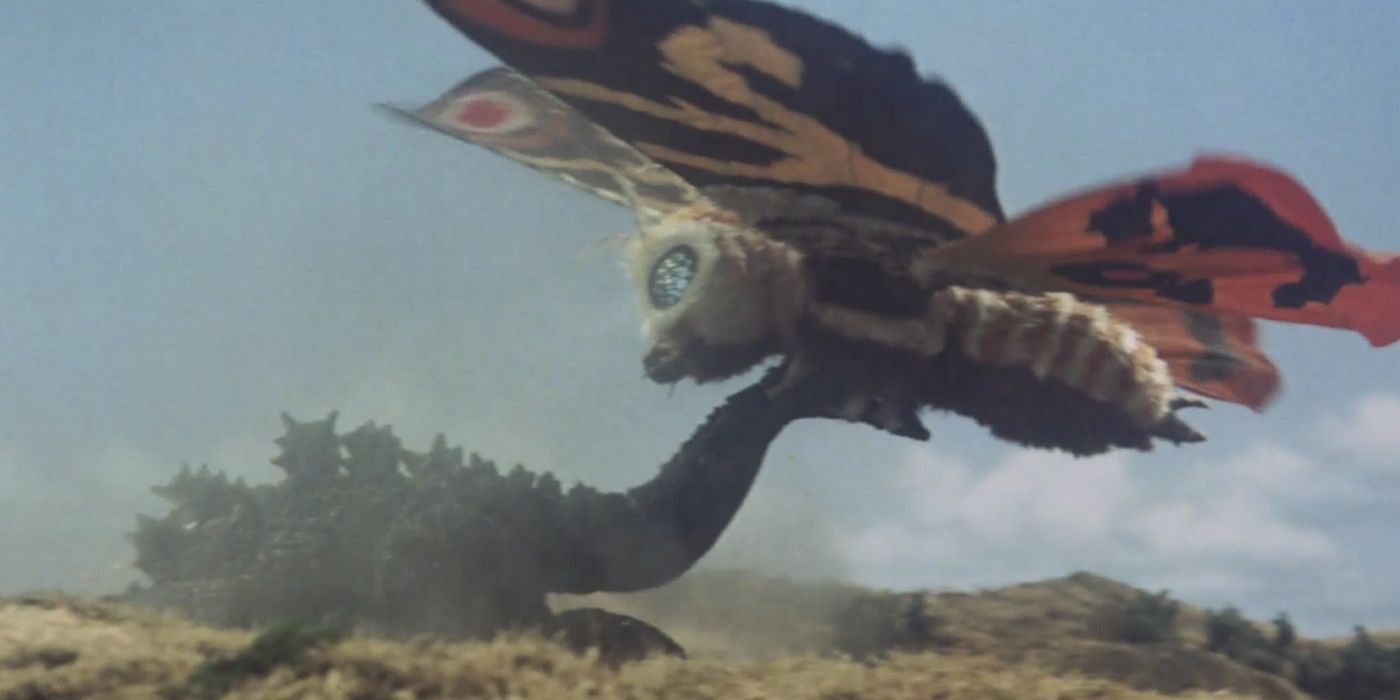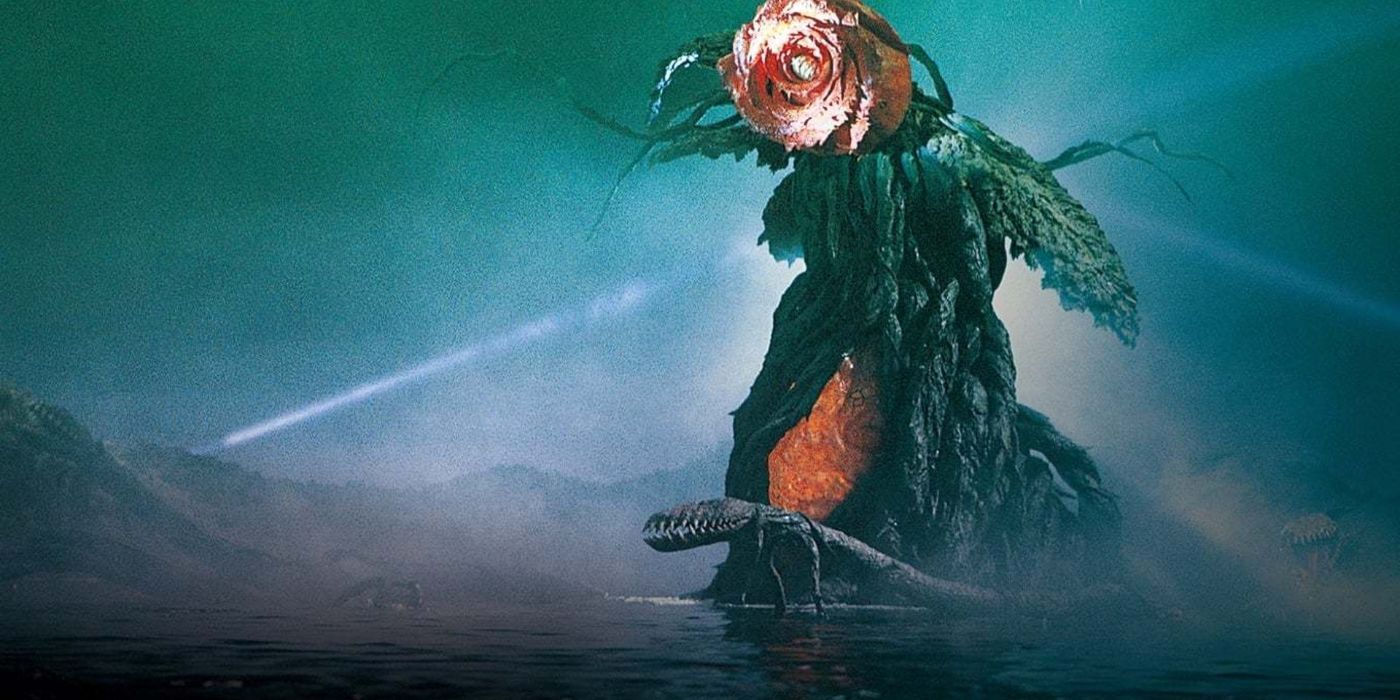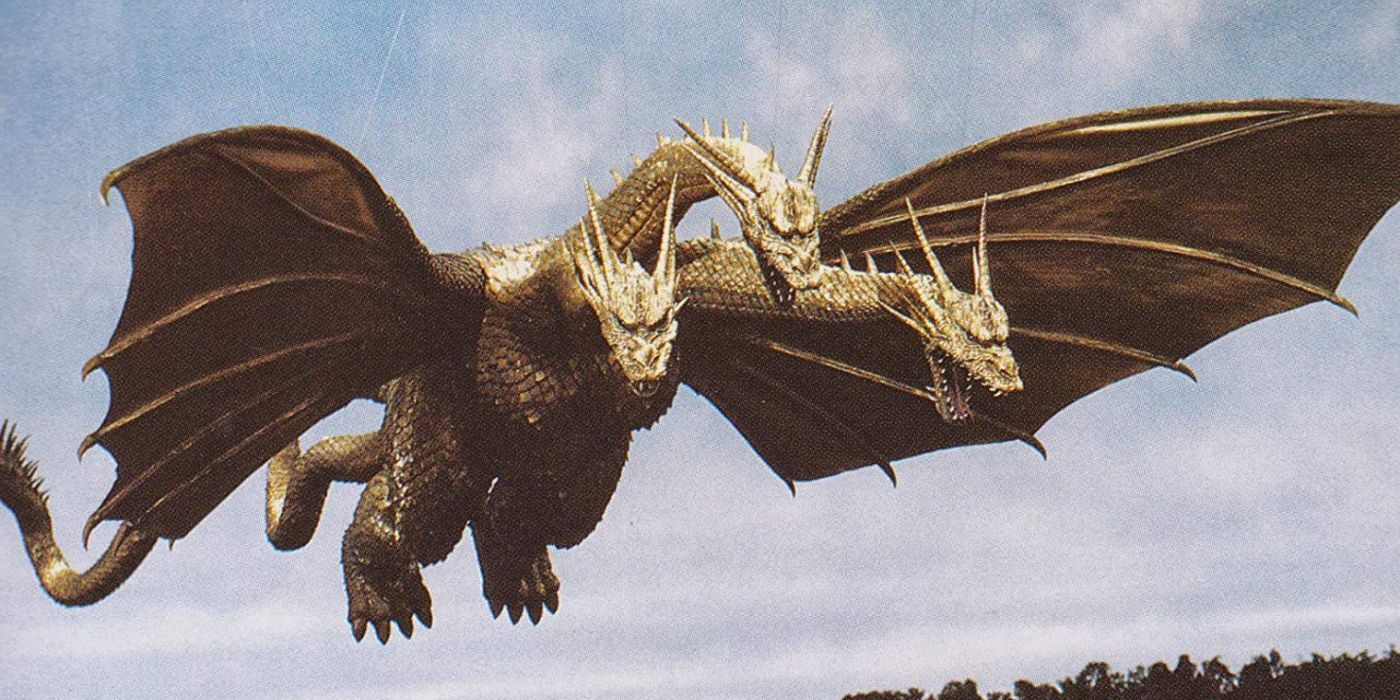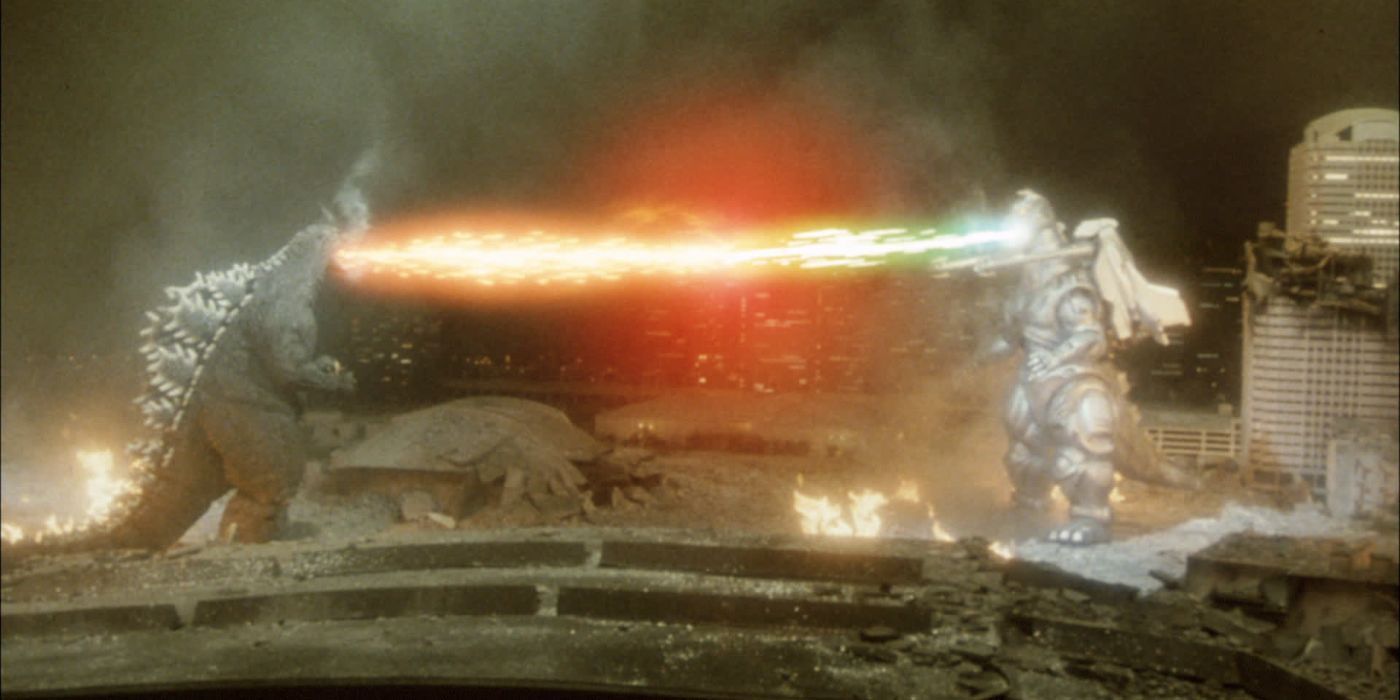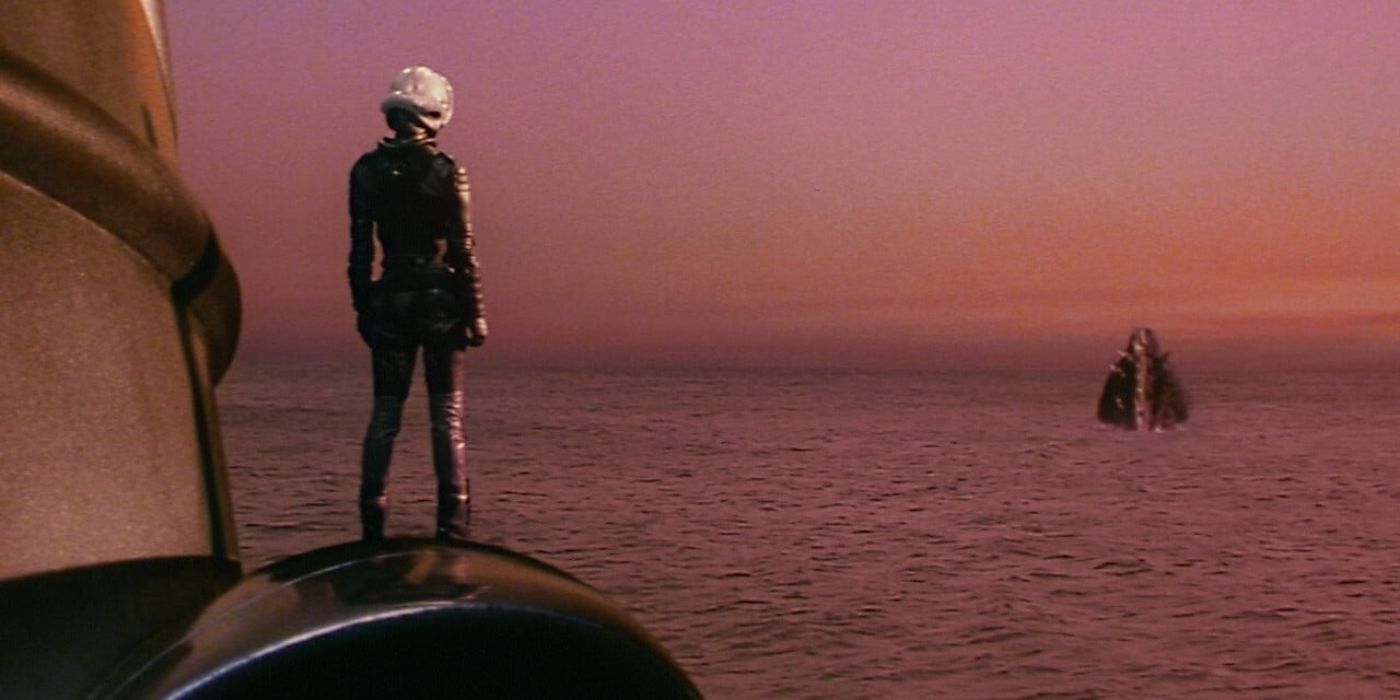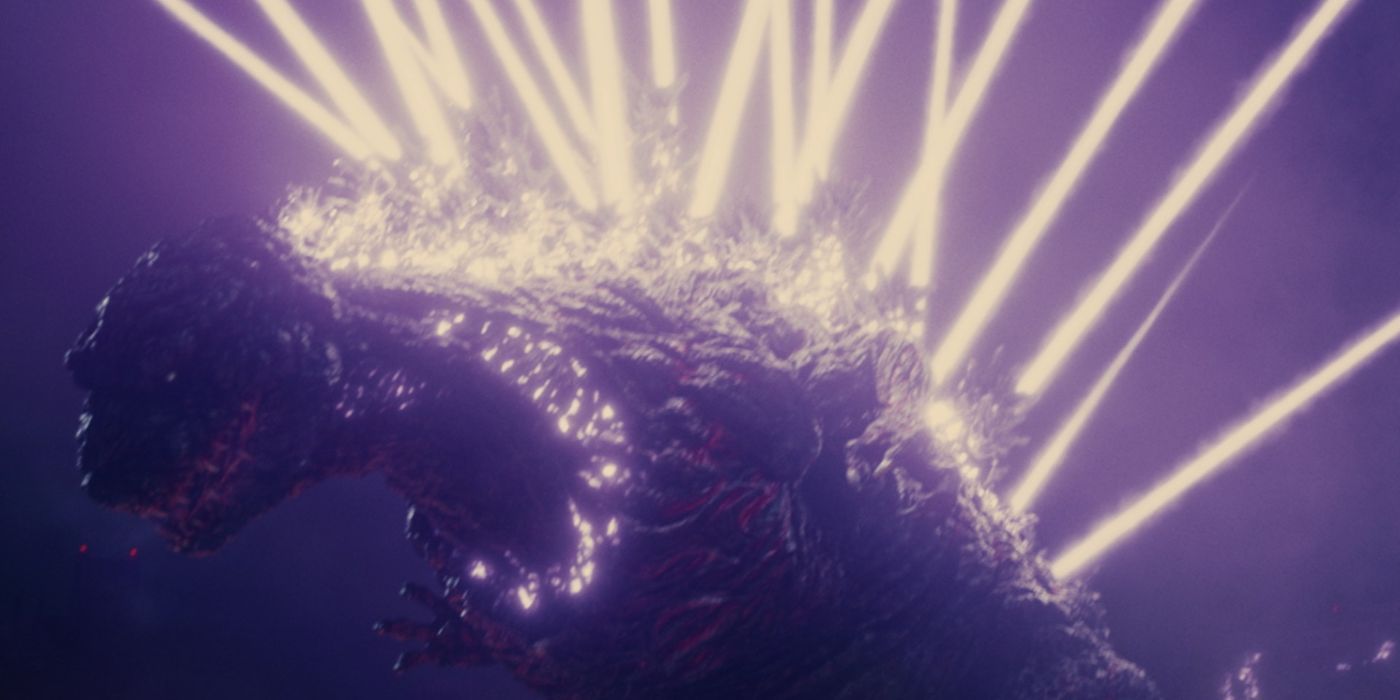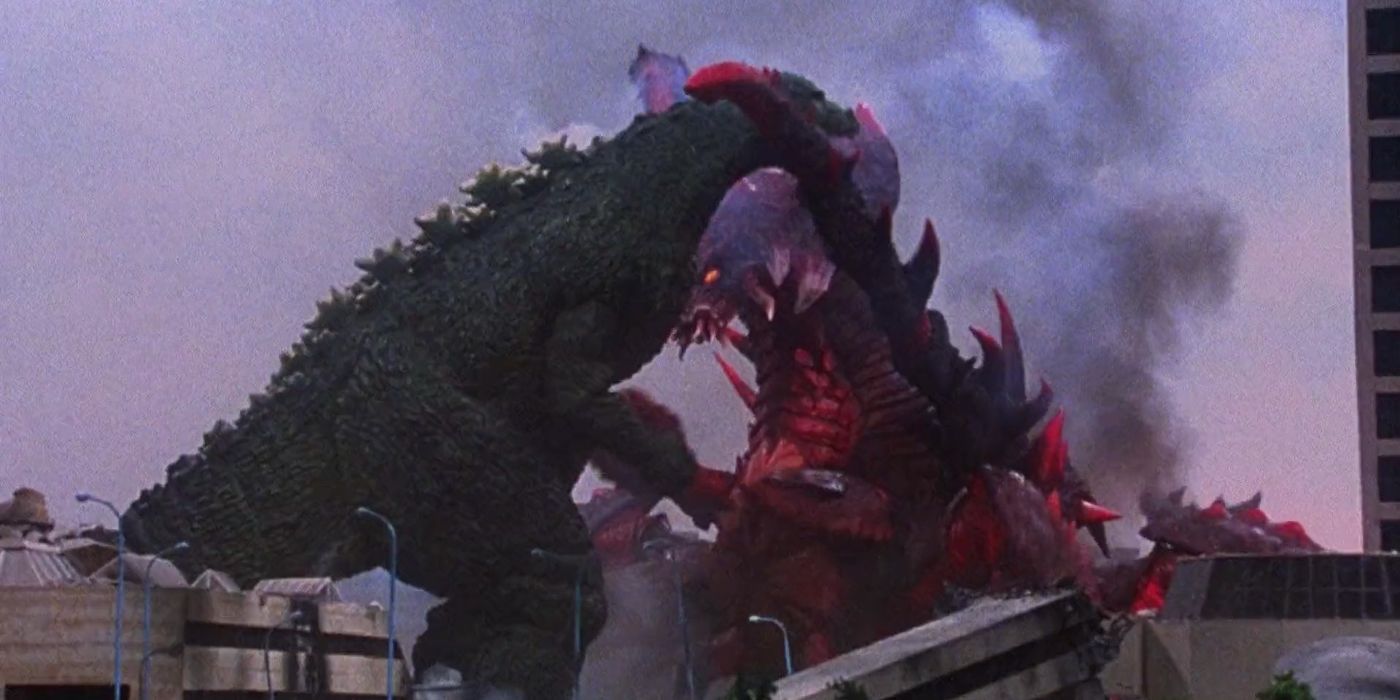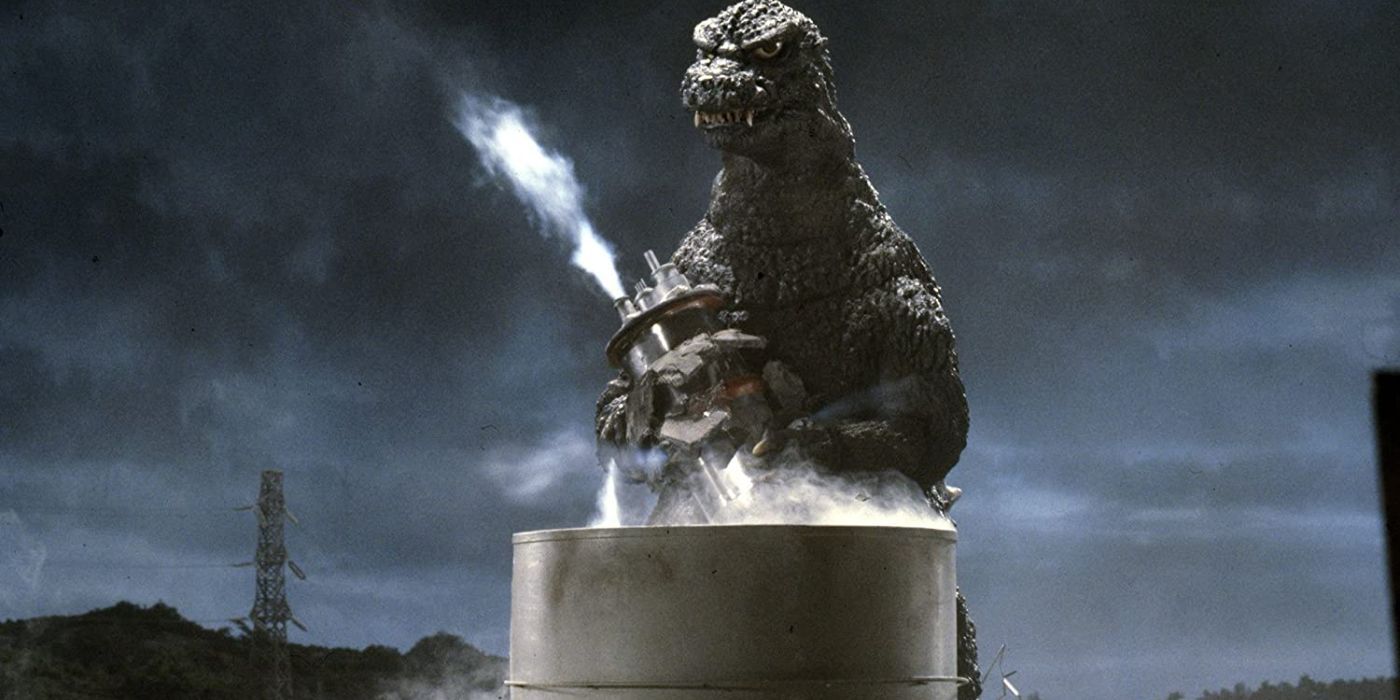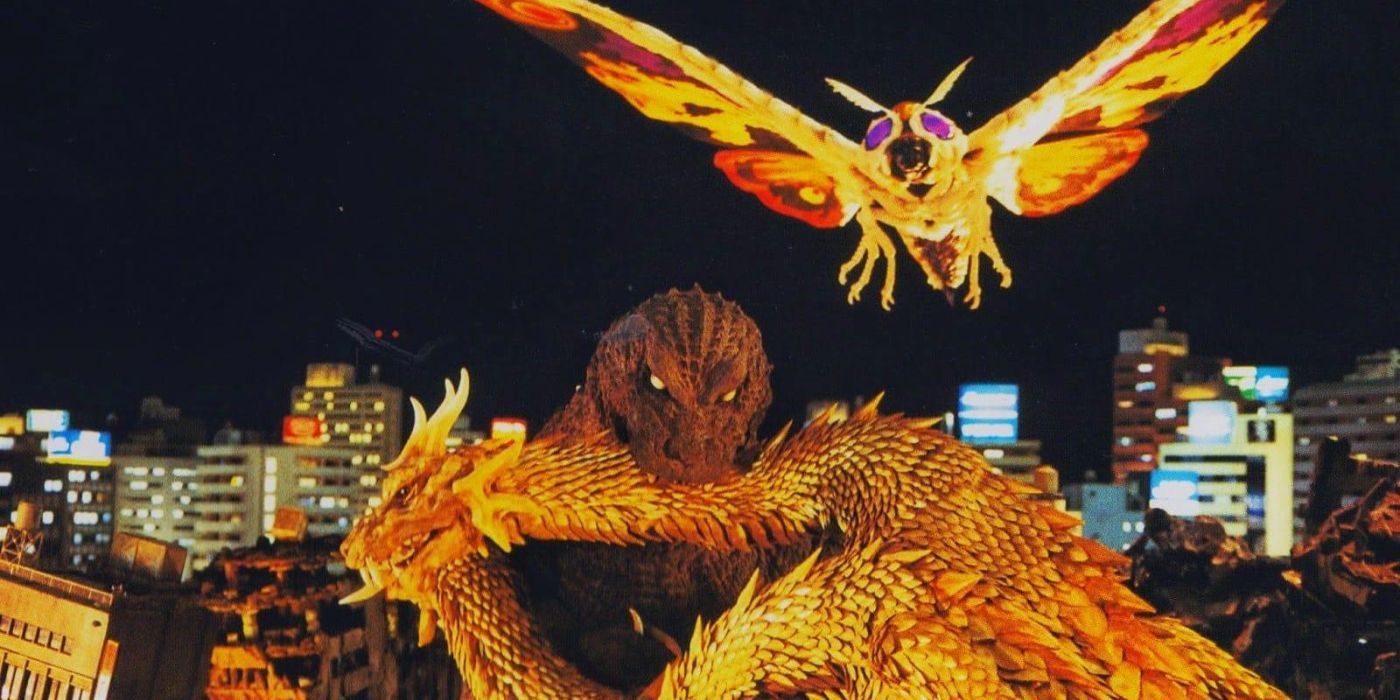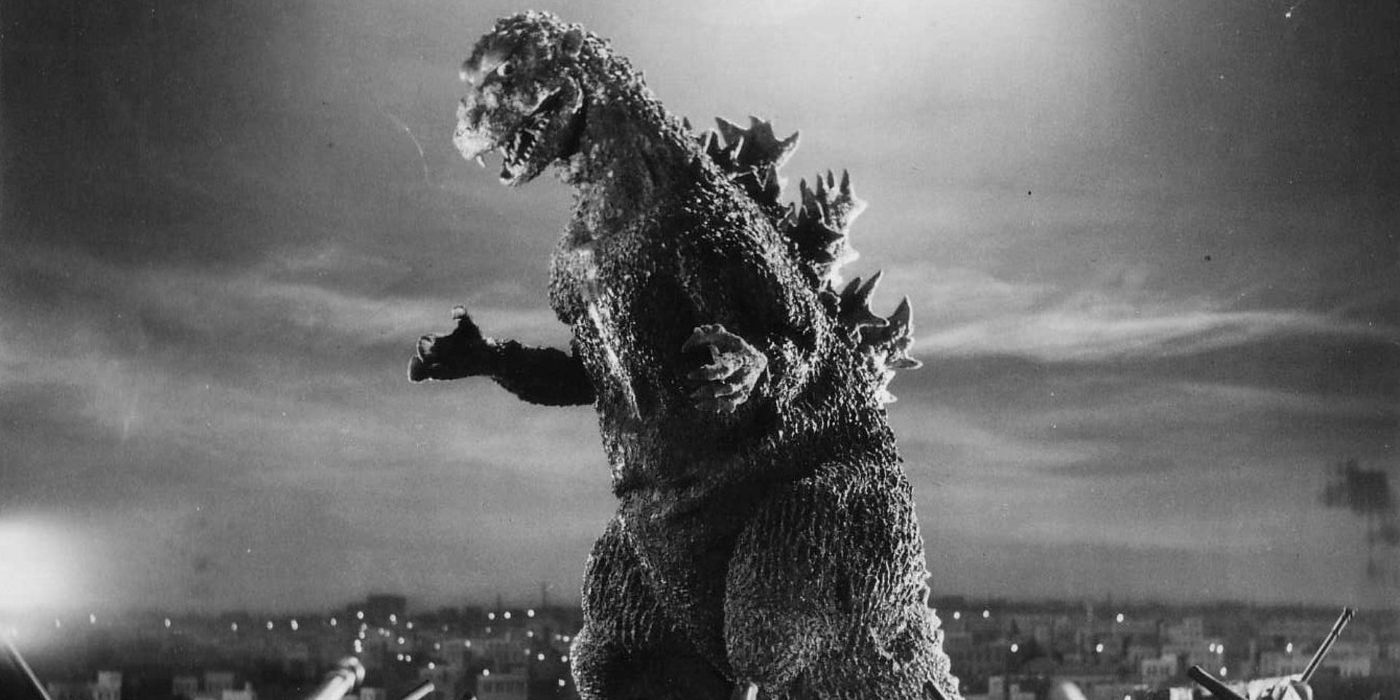Not just one of the longest-running film franchises of all time, but arguably one of the most exciting, Godzilla has been a mainstay of cinema since its inception in 1954. What started as a kaiju metaphor for post-war Japan has become a malleable subject, managing to tackle a wide array of topics, though most notably the best entries in the series look at how humanity faces such devastating crises.
Continuity aside, watching Godzilla raze the cities of Japan has always been first and foremost what people look for from film to film. Whether he's on a solo mission to find a radioactive dinner or defending Earth against its errors in judgment, Godzilla is not just the first major kaiju on-screen, but the one who can make us laugh, or send chills down our spine in sheer, abject terror.
10 The Psychedelic Beauty of Mothra vs. Godzilla (1964) - 6.6
When Mothra's around, you know that humanity's insect protector is going to get top billing. Marking her second appearance overall, and her first pitted in mortal combat against Godzilla, this 1964 classic is a psychedelic fantasia for the ages. Featuring jaw-dropping matte paintings, and a mysterious island with lilliputian inhabitants who sing songs to Mothra, the film marks one of the high points of not just the Showa era, but the series overall. By the time Mothra sacrifices herself to protect the people of Japan, you'll find yourself in tears. Thankfully, Mothra blesses the world with two larvae offspring who end the film worming their way into the sunset with the two psychic Shobijin twins bidding Japan farewell.
9 Raging Flower Power in Godzilla vs. Biollante (1989) - 6.6
While the Godzilla films have always looked toward humanity's hubris for inspiration, few titles in the series offer more potency than Godzilla vs. Biollante. Created from a dormant Godzilla's cells, plant cells, and a girl named Erika whose father is behind plans for genetic plant modification, Biollante is not just an incredibly imaginative and well-executed opponent for Godzilla, but something much more heartrending.
Heavy on corporate espionage and imagining a well-meaning future, the film is more than just a series of kaiju brawls, but a complex and existentially jarring movie that stands out for great performances and beautiful, threatening monster design.
8 The Head-Spinning Mechanics of Godzilla vs. King Ghidorah (1991) - 6.6
Filled with forays into the fantastical, and featuring the time-traveling Futurians, 1991's Godzilla vs. King Ghidorah is a go-for-broke classic of the Heisei era. The Futurians, having traveled back from 2303, bring a foreboding message from the future, where Godzilla has lain ruin to Japan. They convince the then-present humans to travel back to 1944 to prevent the radioactive mutation of a dinosaur who was rumored to be in the area of Lagos Island. From there, the Futurians' plan comes into light as they secretly want to advance their cause, to create the unstoppable force known as King Ghidorah and ensure global domination in Japan's future.
7 Gods and Parenting in Godzilla vs. Mechagodzilla II (1993) - 6.6
Contrary to what the title would have you believe, Godzilla vs. Mechagodzilla II is not a sequel to 1974's Godzilla vs. Mechagodzilla, nor is it related to Godzilla Against Mechagodzilla. If that isn't enough, then the film's scientists' discovery of a second brain located in Godzilla's lower torso – which accounts for the lizard's fancy footwork – will surely set you over the edge. The story is pretty much a mess, with both Rodan and Godzilla vying for the paternity of a monster egg. Utilizing King Ghidorah's remains from one film prior, the humans have made the titular mech to destroy Godzilla once and for all. Questionable titles and anatomy aside, the film still has some stellar fight sequences.
6 The Human Core at the Heart of Godzilla Against Mechagodzilla (2002) - 6.7
Another reboot within the Millenium era, Godzilla Against Mechagodzilla takes the literal bones of the original 1954 Godzilla and uses them to create Kiryu, better known as Mechagodzilla. While the film is a retread of the many Mechagodzilla storylines, it is in the pilot character Akane Yashiro where the movie finds its emotional center. At the helm of Kiryu, Akane is a strong tactical opponent to Godzilla and uses the oft-mentioned Absolute Zero cannon to cause the big lizard to retreat. While Japan licks its wounds, they reflect on the inevitable return of Godzilla which would occur in the direct sequel Godzilla: Tokyo S.O.S. in 2003.
5 Red Tape Nightmares in Shin Godzilla (2016) - 6.8
Shin Godzilla is the bureaucratic nightmare to end all nightmares. Focusing mostly on the government officials who can only act or do anything if it's approved in writing, Shin Godzilla takes its direct cues from the then-recent Fukushima and the perils of a nuclear reliant society. Godzilla is also more grotesque than ever, first appearing as a lidless, fish-eyed creature that dumps boatloads of blood from its gills. Godzilla's final form in the film is no less disturbing, looking scabrous and fleshy. While there are flashes of pitch-black comedy thrown into the mix, Shin Godzilla is an ode to the indomitable human spirit in the face of unforeseen and unstoppable disaster.
4 On the Verge of a Meltdown in Godzilla vs. Destoroyah (1995) - 7.0
The last of the Heisei era films, Godzilla vs. Destoroyah catches up with perennial hothead Godzilla as he's having a literal meltdown. Plagued with large red gashes cutting across his torso, Godzilla is on the verge of a nuclear explosion. To make matters worse, there's an army of rapidly evolving angry crustaceans that can fuse to become a single destructive entity. The resulting creature, Destoroyah, is one of the more formidable opponents of Godzilla. Featuring Godzilla Junior, the film takes a surprising and emotional turn in its closing minutes, marking one of the most emotionally impactful entries in the series that wasn't a metaphor for the horrors of nuclear warfare.
3 The Gritty 80s Reboot of The Return of Godzilla (1984) - 7.0
With blatant disregard for several films' worth of storylines, The Return of Godzilla (1984) is often considered the bridge between the Showa and Heisei eras of the big green lizard. The film serves as a direct continuation of the first film but remixes many of the familiar Godzilla tropes for a new generation. The characters can still feel the ripple effects of the 1954 attack, which claimed most of their families. The film has a distinctly dark and gritty 80s style, with slick, silvery sparkles of light. Despite a high body count and citywide decimation, the film is a gorgeous thing to behold. Plus, there's a cool flying airbase called the Super X. What more could you want?
2 Everything but the Kitchen Sink in Godzilla, Mothra, and King Ghidorah: Giant Monsters All-Out Attack (2001) - 7.1
More than a tongue twister, the third film in Godzilla's Millenium Era, Godzilla, Mothra, and King Ghidorah: Giant Monsters All-Out Attack is a smackdown event for the ages. Featuring not just the King of the Monsters himself, but fan-favorite kaiju who have proven their ability to withstand the pressures of their standalone films, the movie has is chock full of decadent destruction and big-budget spectacle.
Despite being a Godzilla for a new generation, All-Out Attack has all of the classic government press conferences, kaiju lore, but adds weightier human themes, making this film a standout in the big lizard's body of work.
1 The Terrifying Metaphor of Godzilla (1954) - 7.6
Awoken from his aquatic slumber due to the explosion of a hydrogen bomb, Godzilla makes his way to Tokyo to wreak nuclear-lizard havoc. Ishirō Honda's first foray into the realm of kaiju in 1954 is not merely the blueprint, but an exemplar of a newfound genre. Right out of the gate, Godzilla, rendered in stark black and white, made an immediate and lasting impression.
Accompanied by Akira Ifukube's score, a thumping march of impending doom, Godzilla gave form to fear in post-war Japan, and would set in motion nearly 70 years' worth of sequels, spinoffs, and knock-offs. But for better or worse, Godzillas first appearance remains his most stunning.

